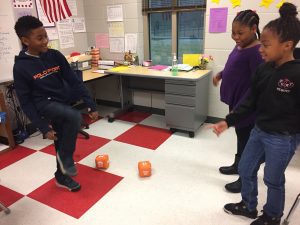Classroom Physical Activity Breaks
Physical activity doesn't have to be in a recess or PE setting to be effective.
Read More
 Breaks give children opportunities to get active and mentally focused. Brain breaks are just what they sound like – an opportunity to take a break from what you are working, get moving, and wake up the brain. You can use brain breaks in the classroom, at home, and adults can even use them to refocus at work. They are especially helpful when having to sit for long period of times (e.g., during testing at school, while waiting at the doctor’s office, even in the car. Try one of these activities to wake up those brains!
Breaks give children opportunities to get active and mentally focused. Brain breaks are just what they sound like – an opportunity to take a break from what you are working, get moving, and wake up the brain. You can use brain breaks in the classroom, at home, and adults can even use them to refocus at work. They are especially helpful when having to sit for long period of times (e.g., during testing at school, while waiting at the doctor’s office, even in the car. Try one of these activities to wake up those brains!
Brain Break Dice
Mindful Moves
Smooth(ie) Move
The list goes on…
Brain breaks can look all sorts of ways. Taking a moment to break from an activity or transition to a new part of the day allows the mind to connect with the body, reflect and reset through movement, art, mindfulness and more. Some other ideas include…
Practice together. Whether in the classroom or at home – brain breaks are for all (and adults can model their importance by participating too).
Keep physical activity breaks short and manageable. Shoot for 1 – 5 minute breaks at least 2-3 times per day.
Empower children to suggest and choose which activities, games and movements they find enjoyable and accessible.
Demonstrate modifications of simple and complex movement skills such as jumping jacks, squats, and push-ups. For example, show children a wall push-up, a kneeling push-up, and a full push-up. Give children the opportunity to choose which option is best for them.
Children who need adaptations may benefit from follow the leader by pairing with a partner or small group to match moves.
For more activities and ideas like this one, be sure to sign up for our news and updates. And if you like what you see, please donate to support our work creating more ways to help build a healthier future for kids.
Categories: Physical Activity & Play, Social-Emotional Health, At Home, At School, Digital Resource